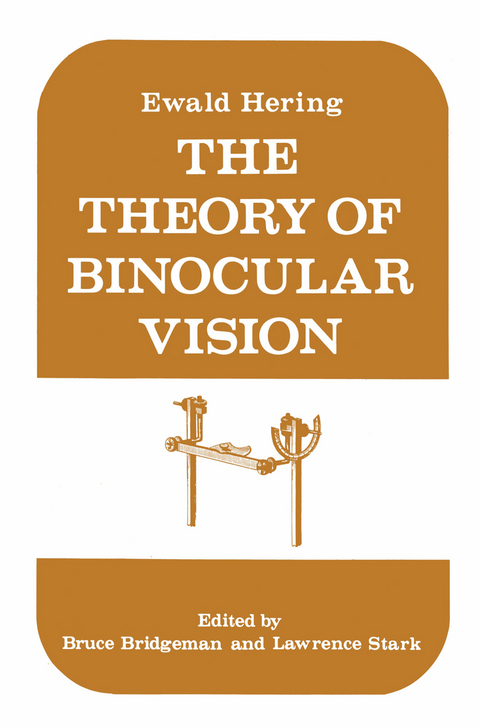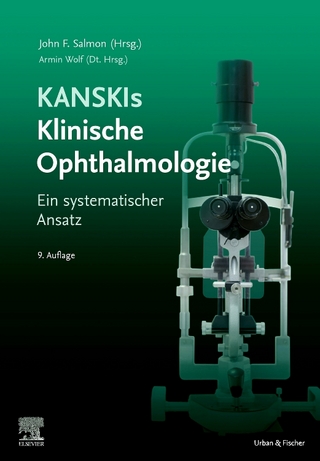
The Theory of Binocular Vision
Springer-Verlag New York Inc.
978-1-4613-4150-5 (ISBN)
The Theory of Binocular Vision is a book about neurological control theory. In this sense it was far ahead of its time, for the formal development of control theory was many decades in the future when this book appeared in 1868. Hering's principal concept is that the control of eye movements is greatly simplified if there is only one neurological control system commanding the 'double-eye' as a single organ. This idea leads directly to the first thorough exposition of what is now known as Hering's law, that the corresponding muscles of the two eyes are always equally innervated. As Hering eloquently states it, "one and the same impulse of will directs both eyes simultaneously as one can direct a pair of horses with single reins" (Ch. 2). The 19th Century The book was written during an exciting era for physiological research. Before the mid-19th century the study of physiology had been limited to isolated efforts by great men who worked largely without colleagues or organized laboratories. Now for the first time of inquiry, with many sensory physiology was becoming a living field groups working simultaneously on fundamental problems. Like the classical Greeks before them in philosophy, the physiologists of the 19th century were defining in a burst of creative energy the problems 1 2 Introduction which would shape subsequent inquiry; and like the Greeks, they produced a splendid period of science.
Translator’s Note.- Ch. 1 Introduction.- One On the Bifixation of the Double Eye.- Ch. 2 On the equal innervation of both eyes.- Ch. 3 Grounds for and against the assumption of an always equal innervation of both eyes.- Ch. 4 Proofs for equal innervation with unequal lateral movement.- Ch. 5 On the artificial upward or downward deviation of one eye.- Ch. 6 Proof that the compulsion to equal innervation of both eyes is inborn.- Ch. 7 On the motives of eye movement.- Ch. 8 On the innervation of the double eye.- Ch. 9 The basic law of innervation and muscle action.- Ch. 10 Proofs for the law of innervation.- Ch. 11 Deviations from the laws of muscle actions described in Chapter 9.- Ch. 12 On the fixation space of the double eye.- Two On the Orientation of the Double Eye.- Ch. 13 Mechanical prerequisites.- Ch. 14 The law of equal retinal position with equal fixation position.- Ch. 15 The law of orientation with parallel lines of sight.- Ch. 16 Determination of retinal position with afterimages.- Ch. 17 Determination of retinal position with binocular images.- Ch. 18 Investigation of retinal position with converging lines of sight.- Ch. 19 On the optical meaning of the orientation laws.- Three On the Eye Muscles.- Ch. 20 Background about the eye muscles.- Ch. 21 On the single actions of the eye muscles.- Ch. 22 Mechanical proofs for the innervation law given in Chapter 10.- Four On the Accommodation of the Double Eye.- Ch. 24 On the equal innervation of both eyes.- Ch. 25 On the relationship between accommodation and convergence.- Ch. 26 On the artificial dissociation of the relationship between accommodation and convergence.- Ch. 27 On the origin of the relationship of accommodation and convergence.- Ch. 28 Pathology.- Summary of the Modern Status of Hering’s Law.-References.- References for Introduction and Commentaries.
| Zusatzinfo | VI, 218 p. |
|---|---|
| Verlagsort | New York, NY |
| Sprache | englisch |
| Maße | 155 x 235 mm |
| Themenwelt | Medizin / Pharmazie ► Medizinische Fachgebiete ► Augenheilkunde |
| Medizin / Pharmazie ► Medizinische Fachgebiete ► Neurologie | |
| ISBN-10 | 1-4613-4150-7 / 1461341507 |
| ISBN-13 | 978-1-4613-4150-5 / 9781461341505 |
| Zustand | Neuware |
| Haben Sie eine Frage zum Produkt? |
aus dem Bereich


